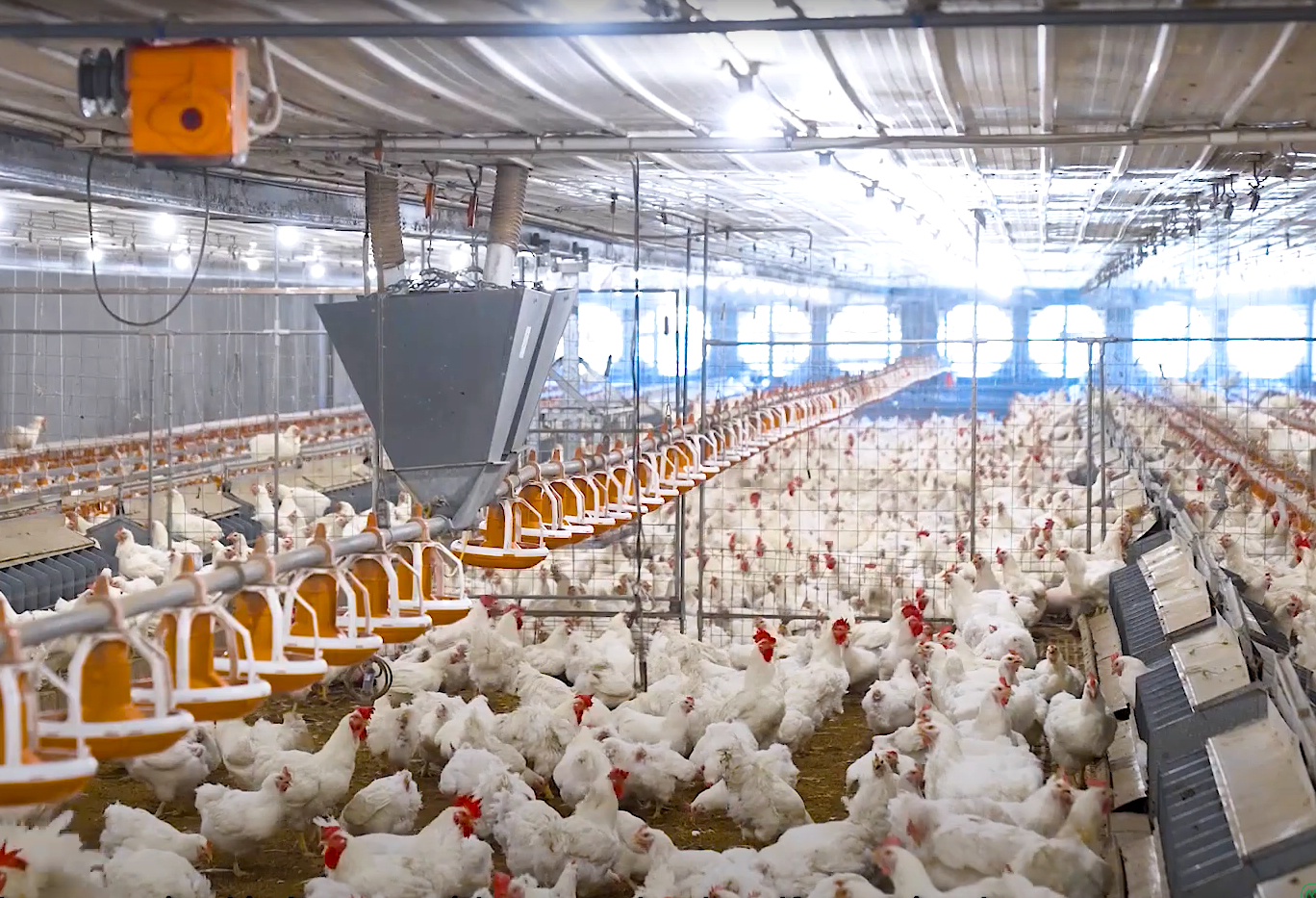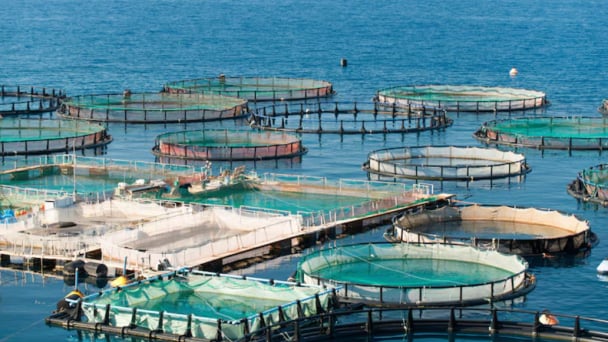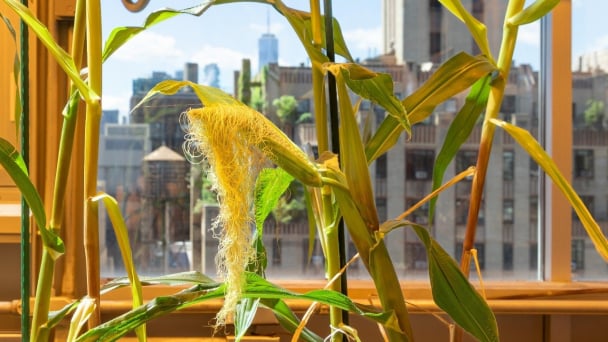June 4, 2025 | 17:18 GMT +7
June 4, 2025 | 17:18 GMT +7
Hotline: 0913.378.918
June 4, 2025 | 17:18 GMT +7
Hotline: 0913.378.918

White chickens on an industrial scale farm in Binh Phuoc province. Photo: Son Trang.
According to Mr. Nguyen Kim Dung, Head of the Epidemiology Division under Region 6's Sub-Department of Animal Health, provinces in Southeastern Vietnam have built 451 facilities and 22 zones free of avian influenza and Newcastle disease. These disease-free establishments are located in the provinces of Ba Ria - Vung Tau, Dong Nai, Binh Duong, Binh Phuoc, and Tay Ninh. Most notably, Ho Chi Minh City has established an avian influenza and Newcastle disease-free zone on a city scale.
In order to promote the export of Southeastern poultry products, the Department of Animal Health has developed a roadmap to build disease-free facilities and zones for poultry in compliance with regulations of Vietnam and the World Organisation for Animal Health (OIE/WOAH).
According to Vietnam's standards disease-free zone, six districts in Binh Phuoc province have been certified as free from avian influenza and Newcastle disease in 2023.
Vietnam aims to establish 11 additional disease-free zones by 2025, including four districts in Binh Duong province, three in Dong Nai province, and two in Tay Ninh province.
Furthermore, Vietnam aims to maintain the existing standardized disease-free districts until 2030. Additionally, the avian influenza and Newcastle disease-free zones are expected to reach other other districts in the region as well as several neighboring provinces such as Dak Nong and Lam Dong.

Disease-free chicken farm in Binh Phuoc province. Photo: Son Trang.
Regarding OIE-compliant disease-free zones, the Department of Animal Health has set a goal of establishing four districts of Binh Phuoc province that are free of avian influenza and Newcastle disease.
The Department aims to declare six additional districts in Binh Duong province and Dong Nai province to be free of avian influenza and Newcastle disease.
A non-vaccine animal health safety measure against avian influenza and Newcastle disease for poultry meat production chains are outlined in a detailed roadmap through 2026 and beyond.
The Department of Animal Health estimates that the number of poultry in these disease-free zones will reach approximately 200 million heads. Accordingly, over 200,000 tons of meat and eggs will be produced, 100,000 tons of which will be exported and bring in 400 million USD annually.
As a result, by successfully building disease-free zones for poultry production according to the roadmap proposed by the Department of Animal Health, the volume and value of poultry exports will be greatly improved. According to the Department of Livestock Production, new chicken meat exports reached nearly 19,000 tons in 2022, which is worth nearly 85 million USD.
The OECD/FAO forecast shows that poultry meat consumption is expected to increase to at least 154 million tons worldwide, accounting for nearly 50% of the global meat consumption. Poultry meat consumption have increased sharply in many countries and regions around the world due to their low prices, product adaptability, and high protein/low fat contents.
Some countries that current boast strong growth in poultry meat consumption include China, India, Indonesia, Malaysia, Pakistan, Peru, Philippines and Vietnam.
The Department of Livestock Production reported that as of December 31, 2022, Vietnam's total poultry herd has over 557 million heads. The Southeast region has a total herd of nearly 91 million heads, accounting for 12.67% of the total herd in the country. According to the national livestock development strategy from 2021 to 2030, with a vision towards 2045, Vietnam aims to maintain a regular chicken population betweem 500 and 550 million heads. Additionally, 60% of these chickens will be raised using industrial methods. Poultry meat is expected to account for 29 - 31% of the total amount of carcasses; the proportion of poultry subjected to industrial slaughter is expected to reache 50%; between 40 and 50% of the total poultry meat will be processed; between 20 and 25% of the total poultry meat and eggs will be exported.
According to Mr. Pham Van Dong, Director of the Department of Animal Health, in order to boost poultry exports, Vietnam must meet the requirements of the World Organization for Animal Health (OIE) as well as those of the importing market.
“So far, Vietnam has been allowed to export poultry to seven countries around the world. Expanding this market range can be quite difficult. Therefore, if there is a market, we must take full advantage of the opportunity. We must avoid stockpiling goods so that congestion caused by pandemic would not impair our exporting power" emphasized Director Pham Van Dong.
Translated by Nguyen Hai Long

(VAN) Technology is redrawing the map of Vietnamese aquaculture: more modern, greener, and more sustainable.

(VAN) Novel process harnesses machine learning to reveal groups of genes that determine how efficiently plants use nitrogen.

(VAN) Several scientists and farmers are experimenting with soil treatment in some key durian-growing regions such as Cai Lay (Tien Giang), Dak Song, Gia Nghia, and Dak R’lap (Dak Nong).
/2025/05/25/4127-3-073637_820.jpg)
(VAN) Thanks to the promotion from an FAO-implemented project, vegetable production in greenhouses in Moc Chau has seen strong development, from 1.5 hectares in 2021 to nearly 50 hectares in 2024.

(VAN) FAO has recently supported USD 140,000 to implement the project 'Risk mitigation human-animal interface risks through disease control initiatives in pig farming.'

(VAN) The People's Committee of Tra Vinh province has approved an adjustment to the investment policy for the Green Hydrogen Plant project, increasing its area to approximately 52.76 hectares.
![Reducing emissions from rice fields: [2] Farmers’ commitment to the soil](https://t.ex-cdn.com/nongnghiepmoitruong.vn/608w/files/news/2025/05/05/dsc08881jpg-nongnghiep-140632.jpg)
(VAN) Clean rice cultivation model in Thuong Tan commune, Bac Tan Uyen district, is assisting local residents in achieving sustainable agriculture by substantially reducing costs, increasing productivity, and protecting the environment.